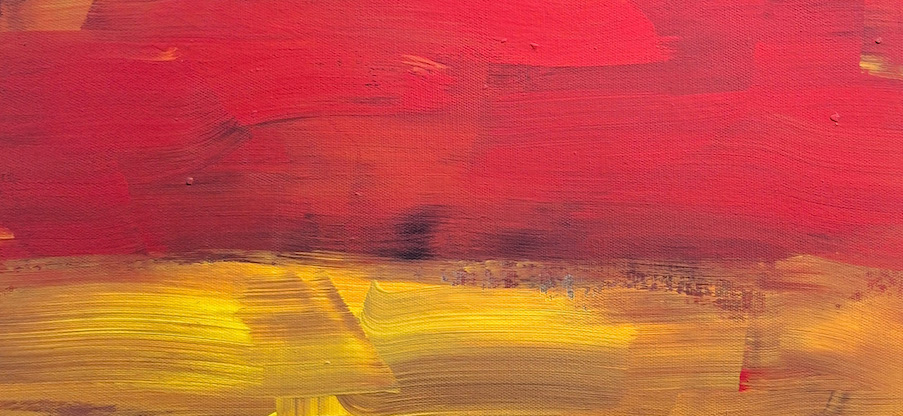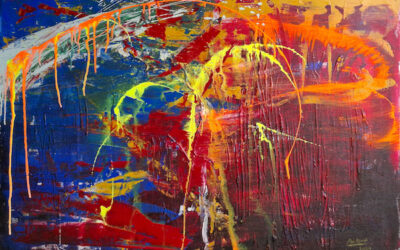Abstract art is a world without a map — no fixed direction, no final destination. That’s exactly where its beauty lies: it invites us to wander with our feelings and imagination, not logic.
1. Letting Go of Certainty
Most of us are used to looking at recognizable images — landscapes, people, objects. Our brains search for patterns and concrete meanings.
But when we face an abstract painting — with colors that seem random, shapes that resemble nothing familiar — we often feel unsure.
“What does it mean?”
“What is the artist trying to say?”
“I don’t get it…”
That uncertainty is not a weakness. It’s the strength of abstract art.
It doesn’t demand to be understood — it simply asks to be felt.
2. A Silent Work That Echoes Deeply
Unlike narrative or realistic art, abstract works don’t speak in clear stories. But they echo something inside us — like a song without lyrics.
A mix of color and composition might suddenly bring calm, tension, nostalgia, or joy.
Just like instrumental music, abstract art communicates through feeling, not words.
And those feelings are deeply personal — different for each viewer.
3. Imagination as the Bridge
What happens when you see bold brushstrokes of red crossing a deep navy blue? Or soft green shapes flowing into gold?
One person might see a storm.
Another, a memory of childhood.
A third might not see anything specific — but still feel something strong.
Abstract art leaves the “interpretation” to us. Imagination isn’t optional — it’s essential.
4. An Emotional Mirror
Abstract art often acts like a mirror — not of how we look, but how we feel.
The same artwork might feel warm today and heavy next month.
Not because the piece has changed — but because you have.
This is what makes abstract art timeless: it grows and shifts with the viewer.
There are no right or wrong interpretations. There is only honesty: what do you really feel?
5. Finding Beauty in the Unfinished
In a world that often equates beauty with perfection and symmetry, abstract art dares to show something else — the beauty of the undefined.
It may be chaotic, spontaneous, or even confusing — and still… beautiful.
It reminds us that not all things have to be fully understood to be appreciated.
6. Becoming the Interpreter, Not Just a Viewer
When viewing abstract art, we’re not just spectators. We become part of the meaning-making process.
It invites reflection:
“Why do I feel calm when I see this?”
“What memory is being triggered here?”
“What part of me relates to this shape or texture?”
In that space of quiet reflection, abstract art becomes not just visual — but emotional and internal.
7. Creating Atmosphere, Not Just Decoration
This is why abstract art fits beautifully in personal spaces.
Its presence creates mood, depth, and energy — without saying anything outright.
Whether hung in a living room, studio, or creative workspace, it becomes more than decor.
It becomes a source of feeling.
Conclusion
Abstract art is an invitation — to see without knowing, feel without reason, and imagine without boundaries.
It doesn’t need to be explained.
It simply asks to be experienced.
And in doing so, it offers a quiet space to meet parts of ourselves we don’t always hear.
Because often, the things we don’t see clearly are the ones we feel most deeply.




